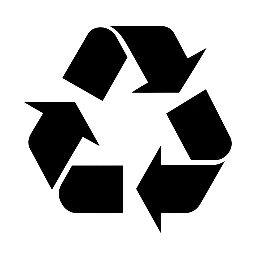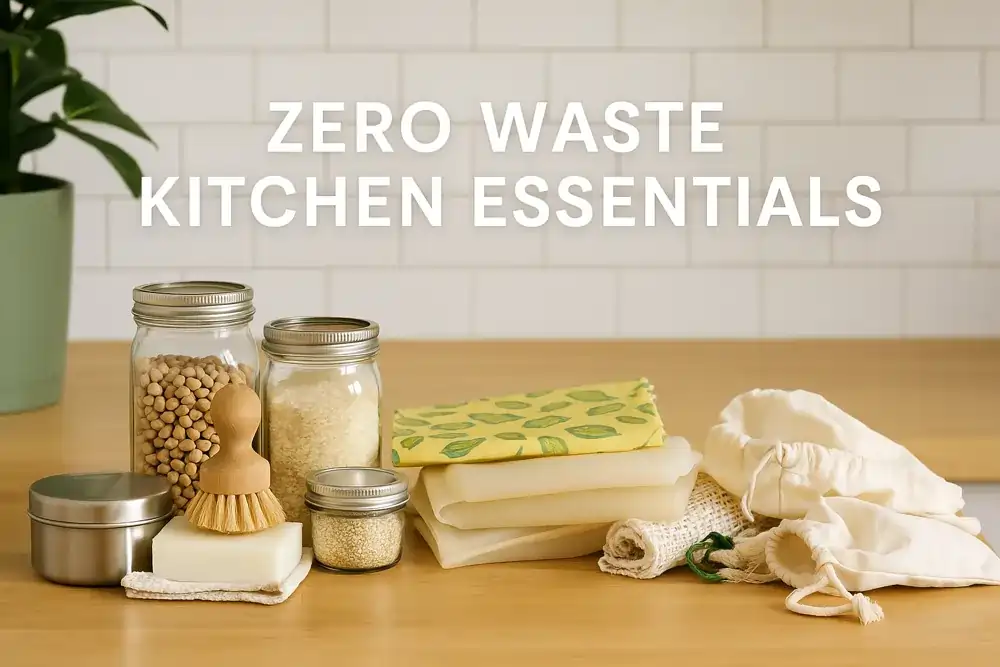Living sustainably begins at home—and the kitchen is the perfect place to start. From excessive packaging to food waste, the modern kitchen is a hub for disposable culture. The zero waste movement aims to change that by shifting toward reusable, compostable, and conscious choices. In this ultimate guide, we explore essential zero waste tools, DIY recipes, and a starter shopping list to help you build a truly sustainable kitchen.
🌿 What Is a Zero Waste Kitchen?
A zero waste kitchen is designed to minimize what goes to landfill by:
- Refusing unnecessary items
- Reducing consumption
- Reusing durable alternatives
- Recycling appropriately
- Composting organic materials
The goal is not perfection, but progress—making intentional choices to protect the planet.
🛠️ Zero Waste Kitchen Essentials
Here are the core items every sustainable kitchen should have, broken down by category:
🥣 Food Storage & Preparation
- Mason jars (repurposed or new)
- Stainless steel containers
- Silicone food-grade bags
- Beeswax wraps
- Reusable bowl covers
- Cloth napkins
🛍️ Shopping & Bulk Storage
- Cloth produce bags
- Canvas grocery totes
- Refillable jars for grains, spices, legumes
- Bulk bin bags or pillowcases
- Chalkboard labels or masking tape
🍽️ Cookware & Utensils
- Cast iron or stainless steel pans
- Wooden or bamboo spatulas and spoons
- Reusable silicone baking mats
- Glass or stainless steel mixing bowls
- Manual kitchen tools (grater, peeler, garlic press)
🧽 Cleaning Supplies
- Wooden dish brush with compostable heads
- Compostable loofahs or coconut scrubbers
- Reusable rags from old clothes or towels
- Solid dish soap or bulk liquid in refillable bottle
- Refillable spray bottles for homemade cleaners
♻️ Waste Management
- Countertop compost bin
- Backyard or balcony compost setup
- Municipal green waste program (if available)
- Recycling station with clear labeling
🧼 DIY Zero Waste Cleaning Recipes
Making your own cleaners is cheaper, healthier, and eliminates single-use plastic.
1. All-Purpose Citrus Cleaner
Ingredients:
- 1 cup white vinegar
- 1 cup water
- Citrus peels (orange, lemon, lime)
Instructions:
Place citrus peels in a glass jar. Cover with vinegar and let infuse for 7–14 days. Strain, dilute with water, and pour into a spray bottle.
2. Homemade Dish Soap
Ingredients:
- 1/2 cup liquid Castile soap
- 1 tbsp baking soda
- 1/2 cup water
- 10 drops lemon or tea tree oil
Instructions:
Combine and store in a pump or squeeze bottle. Shake before each use.
3. Glass & Mirror Cleaner
Ingredients:
- 1/4 cup white vinegar
- 1/4 cup rubbing alcohol
- 1 tbsp cornstarch
- 2 cups warm water
Instructions:
Shake well and spray on glass surfaces. Wipe with a cloth.
4. Sink & Drain Refresher
Ingredients:
- 1 cup baking soda
- 1/2 cup vinegar
- A few drops of lemon essential oil
Instructions:
Pour baking soda and oil into the drain. Add vinegar and let fizz. Flush with boiling water.
🥫 DIY Zero Waste Condiment Recipes
Avoid plastic bottles and artificial ingredients by making your own staples at home.
1. Homemade Ketchup
Ingredients:
- 6 oz tomato paste
- 1/4 cup apple cider vinegar
- 1/4 cup water
- 1 tbsp maple syrup or sugar
- 1/2 tsp salt
- 1/4 tsp garlic & onion powder
Instructions:
Mix until smooth. Store in a glass jar in the fridge for up to 3 weeks.
2. Simple Salad Dressing
Ingredients:
- 1/4 cup olive oil
- 2 tbsp vinegar (balsamic or ACV)
- 1 tsp mustard
- 1 clove minced garlic
- Salt & pepper
Instructions:
Combine in a jar and shake. Keeps up to a week.
3. Homemade Nut Butter
Ingredients:
- 2 cups roasted almonds or peanuts
- Optional: pinch of salt or honey
Instructions:
Blend in a food processor for 5–10 minutes until creamy. Store in a glass jar.
🛒 Zero Waste Kitchen Shopping List
Here’s a handy list to take with you as you stock your sustainable kitchen:
| Category | Essentials |
|---|---|
| Food Storage | Mason jars, beeswax wraps, silicone bags |
| Shopping | Cloth produce bags, canvas totes, bulk jars |
| Cleaning | Dish brush, rags, vinegar, baking soda |
| Cooking | Cast iron skillet, bamboo utensils, bowls |
| Composting | Countertop bin, backyard compost system |
| Baking | Silicone mats, measuring spoons, sifters |
Bonus tip: Use what you already have first before buying new.
📈 Tips to Maintain a Zero Waste Kitchen
- Do a waste audit monthly: track what you’re throwing out most
- Start with easy swaps like reusable produce bags and glass jars
- Store food properly to avoid spoilage
- Meal plan and buy in bulk
- Compost food scraps and coffee grounds
- Support local and bulk stores
- Reuse takeout containers for storage or gifting food
🧠 Common Questions
❓ Is going zero waste expensive?
Not in the long run. You save money by buying less and reusing more.
❓ Do I need to throw away all plastic in my kitchen?
No. Use what you have until it wears out. That’s zero waste, too.
❓ What if I can’t access bulk stores?
Focus on reducing packaged items and meal prepping to avoid waste.
🌎 Final Thoughts
Creating a zero waste kitchen is one of the most impactful steps you can take for the environment. It’s about progress, not perfection, and every swap you make counts. Whether you’re cleaning with homemade sprays or cooking with reusable tools, you’re part of a global movement toward sustainability and responsibility.


Leave a Reply